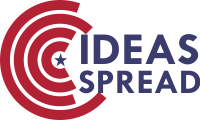Role of Information and Communication Technology in Motivating University Undergraduate Students Towards a Learning Task in Public Sector Universities of Rawalpindi City
Abstract
Over the past few years, information and communication technology has become constantly used in the education especially in the schools, colleges and universities. At the age of globalization technology has its impact upon almost all aspects of life. The purpose of this paper is to explore the role of information and communication technology (ICT) in the motivating University students. The main objectives of the study were to assess motivational features of information and communication technologies as perceived by students. The independent variable of the study was ICT and dependent variable was student’s motivation. Questionnaire was used in the study to collect data. The type of research was survey descriptive research. The sample size of 340 undergraduate students was selected through simple random sampling. Descriptive statistics mean, standard deviation, frequency and percentage were used in the study. Inferential statistics i.e., chi square test was employed for statistical analysis of the data through SPSS. The findings of the study show that ICT effects students’ motivation and improves their learning; knowledge retention and understanding. ICT can solve the problems of the students and motivates students.
References
BECKER, H., 2000. Pedagogical motivations for pupil computer use that lead to student engagement. Educational Technology, 40(5), 5-17.
Christensson, P. (2010, January 4). ICT Definition. Retrieved 2016, Dec 28, from http://techterms.com
Crook, C. (2011). Versions of computer supported collaborating in higher education. Learning across sites: New tools, infrastructures and practices, 156-171.
Heemskerk, I., Volman, M., Admiraal, W., & ten Dam, G. (2012). Inclusiveness of ICT in secondary education: students’ appreciation of ICT tools. International Journal of Inclusive Education, 16(2), 155-170. https://doi.org/10.1080/13603111003674560
Jung, I. (2005). ICT-Pedagogy Integration in Teacher Training: Application Cases Worldwide. Educational Technology & Society, 8(2), 94-101.
Kirkwood, A. (2014). Teaching and learning with technology in higher education: blended and distance education needs ‘joined-up thinking’rather than technological determinism. Open Learning: The Journal of Open, Distance and e-Learning, 29(3), 206-221. https://doi.org/10.1080/02680513.2015.1009884
Kok, A. (2007). ICT Integration into Classrooms: Unpublished literature review
Kukkonen, J. E., Kärkkäinen, S., Dillon, P., & Keinonen, T. (2013). The effects of scaffolded simulation-based inquiry learning on fifth-Graders' representations of the Greenhouse effect. International Journal of Science Education. Retrieved Sep. 10, 2012, from https://doi.org/10.1080/09500693.2013.782452
Miller, M. (2009). What the Science of Cognition Tells Us About Instructional Technology. Change, 41(2), 16-17. Retrieved November 28, 2009, from Research Library. https://doi.org/10.3200/CHNG.41.2.16-17
OECS. (2002). Information and Communication Technology (ICT) Learning Outcomes in Mathematics and Language Arts for Lower Secondary School Students in the Eastern Caribbean. OECS Education Reform Unit. Retrieved June 12, 2008, from http://www.oecs.org/oeru/documents/ICT%20Learning%20Outcomes%20Final.pdf
Oyzon, M. V. L., & Olmos, O. L. (2010). Students’ notes and their relation to comprehension and recall of lecture information. Retrieved from http://journals.upd.edu.ph/index.php/ali/article/view/1752
Porter, D., Weaver, A. J., & Raptis, H. (2012). Assessing students' learning about fundamental concepts of climate change under two different conditions. Environmental Education Research, 18(5), 665-686. https://doi.org/10.1080/13504622.2011.640750
Şahbaz, N. K. (2012). Evaluation of reading attitudes of 8th grade students in.primary education according to various variables. Educational Research and Reviews, 7(26), 571-576.
Sanacore, J. (2008). Turning reluctant learners into inspired learners. The Clearing House: A Journal of Educational Strategies, Issues and Ideas, 82(1), 40-44. https://doi.org/10.3200/TCHS.82.1.40-44
software and information industry association. 2000. Research report on the effectiveness of technology in schools. Retrieved December 11 2002, from http://www.siia.net/sharedcontent/store/e-edtech-sum00.pdf
Volman, M. (2005). A variety of roles for a new type of teacherEducational technology and the teaching profession. Teaching and Teacher Education, 21(1), 15-31. https://doi.org/10.1016/j.tate.2004.11.003
Yoloye, E. O. (2015). New technologies for teaching and learning: Challenges for higher learning institutions in developing countries. Information communication technology (ICT) integration to educational curricula: A new direction for Africa, 250.

This work is licensed under a Creative Commons Attribution 4.0 International License.
Copyright for this article is retained by the author(s), with first publication rights granted to the journal.
This is an open-access article distributed under the terms and conditions of the Creative Commons Attribution license (http://creativecommons.org/licenses/by/4.0/).








1.png)

















